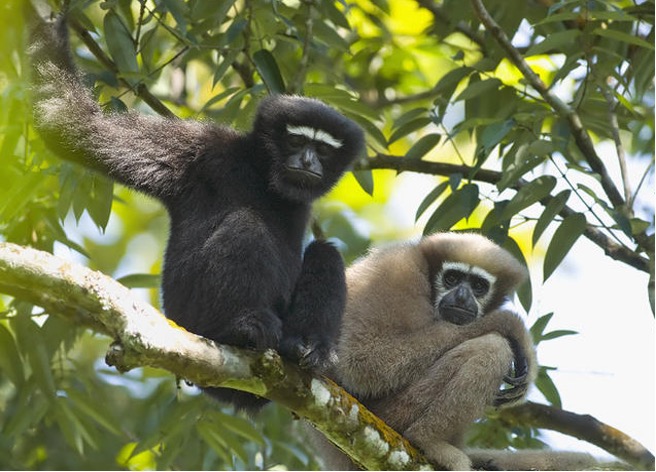Hoolock Gibbon
2023 SEP 5
Preliminary >
Environment and Ecology > Species extinction & protection > Species in news

Why in news?
- Primatologists have suggested rerouting a 1.65-km-long railway track that has divided the Hollongapar Gibbon Sanctuary, in eastern Assam dedicated to the western hoolock gibbon into two unequal parts.
About Hoolock Gibbon:
- Hoolock Gibbons, known as the smallest and fastest of all apes, inhabit tropical and subtropical forests in Southeast Asia.
- They have high intelligence, distinct personalities, and strong family bonds similar to other apes.
- They represent one of the 20 gibbon species found worldwide.
- Population:
- The current population of hoolock gibbons is estimated to be around 12,000 individuals.
- Habitat:
- They are found in forested areas of Northeast India, Bangladesh, Myanmar and Southern China.
Hoolock Gibbon Species in India:
- Two distinct hoolock gibbon species are found in India's northeastern region:
- Eastern Hoolock Gibbon
- Western Hoolock Gibbon
Threats:
- All 20 gibbon species, including hoolock gibbons, are at a high risk of extinction due to conservation challenges.
- Gibbon populations and their habitats have significantly declined over the past century, leaving small populations restricted to tropical rainforests.
- In India, the primary threat to hoolock gibbons is the loss of their natural habitat caused by deforestation for infrastructure projects.
Conservation Status:
- IUCN Red List:
- Western Hoolock Gibbon: Endangered
- Eastern Hoolock Gibbon: Vulnerable.
- Also, both the species are listed on Schedule 1 of the Indian (Wildlife) Protection Act 1972.
PRACTICE QUESTION
Consider the following statements:
1. Hoolock Gibbons are found only in India
2. The primary threat to Hoolock Gibbons is the loss of their natural habitat caused by deforestation for infrastructure projects.
Which of the statements given above is/are correct?
(a) 1 only
(b) 2 only
(c) Both 1 and 2
(d) Neither 1 nor 2
Answer
